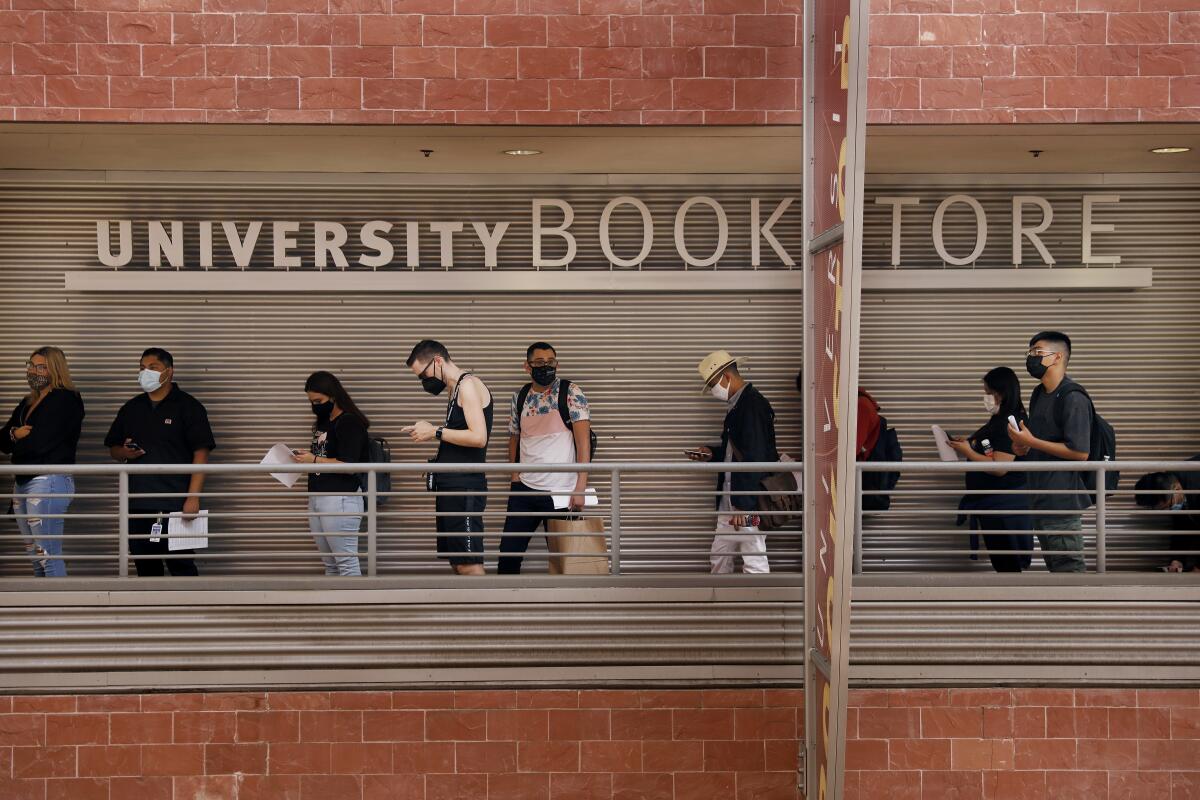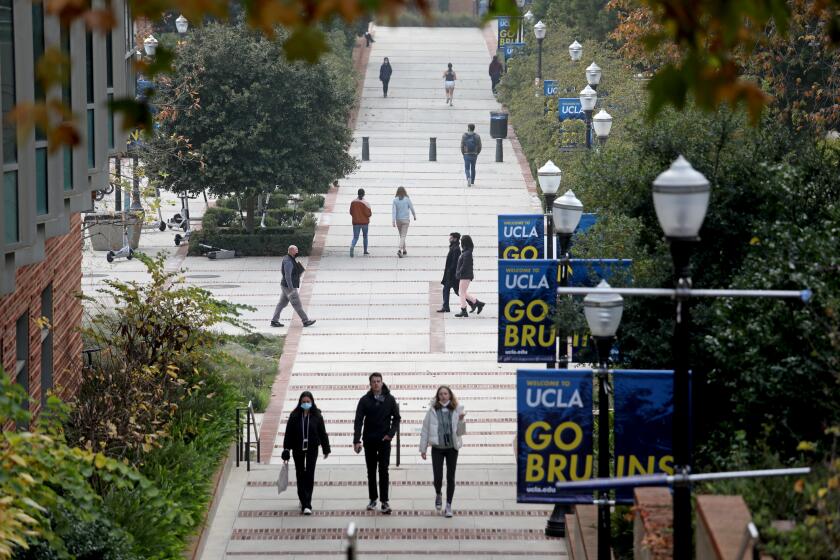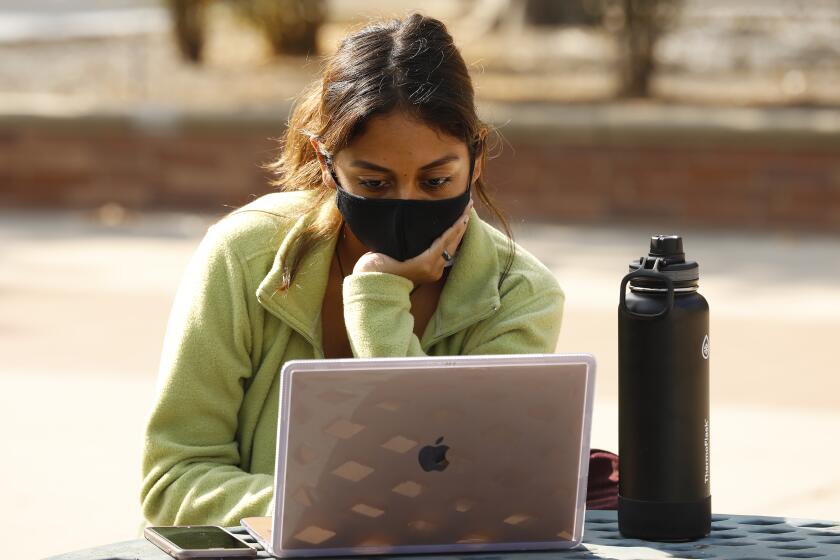State to give $10,000 to low-income college students for community service work

Kaelyn Hughes, 21, has wanted to teach since she was in third grade. For her, school has always been a place of solace — and she wants to share what education has meant to her with other children.
“I would like to show to other Black girls that you can do this — you can go to college. I came from a low-income area, and I didn’t think I would go to college. I didn’t think I would go far,” she said. “But you use education to help you get somewhere better.”
The UC Merced senior spends time in elementary school classrooms working with students struggling with math or English as a volunteer — service that would otherwise be a luxury she could not afford. But through her participation in the state’s pilot Civic Action Fellowship program, she has been paid a stipend for tuition and basic needs, such as rent, allowing her to pursue service instead of another job to make ends meet.
The Civic Action pilot is a model for an initiative at 45 state community colleges and universities, including Merced, that will award $10,000 grants to up to 6,500 community-service-driven students through the new Californians for All College Corps fellowship.
The more than $60-million program aims to support Dreamers and students from low-income backgrounds, including Pell Grant recipients like Hughes, who want to do meaningful volunteer work but face obstacles because they often must hold multiple jobs to support themselves or family. Selected students will be expected to perform a total of 450 community service hours throughout the academic year, focusing on issues that include education disparities in K-12 schools, climate change and COVID-19 recovery. Services may include tutoring and mentoring, conservation efforts and meal delivery.
The budget proposal released Monday makes a significant pledge to UC and CSU: the promise of long-sought financial stability.
Hughes’ time in schools has given her hands-on experiences toward her career goals.
“If you are willing to serve your community and give back in a meaningful way, we are going to help you pay for college,” said California Chief Service Officer Josh Fryday, comparing the initiative to the GI Bill.
The program is part of a $146-million investment in future leaders under Gov. Gavin Newsom’s California Comeback Plan.
“If this thing works, we can go back to the Legislature and take it to a whole other level — hell, we can take it to the rest of the country because nobody else is doing this,” Newsom said.
Funds will go to 16 California State University campuses, including Cal State Los Angeles, Cal State Long Beach, Cal Poly Pomona and San Jose State, seven University of California campuses, including UCLA and UC San Diego, and 18 community colleges, including East Los Angeles College and Glendale Community College, in addition to a handful of private universities.
“The state’s historic investment in this program will help thousands of students pay for college and reduce their debt,” said UC Chancellor Michael V. Drake. “More importantly, this partnership reflects our shared commitment to making college affordable for all, including the 35% of UC undergraduates who rely on Pell grants to help pay for their education.”
Campuses are expected to have application materials available by March. Cal State Chancellor Joseph I. Castro said that up to 1,300 Cal State students will benefit from the funds; California Community Colleges Chancellor Eloy Ortiz Oakley said it will extend to “hundreds, if not thousands” of students.
Undergraduate enrollment has yet to rebound since the start of the pandemic.
Ian Chavez, a junior majoring in computer science at San Jose State and a fellow in the Civic Action program, said the funding has allowed him to continue volunteering his time to teach public school children how to code in the heart of Silicon Valley, where a computer science education isn’t a guarantee.
Chavez, 20, has used his stipend to help pay for tuition and materials, including a webcam he uses for virtual presentations.
“If I didn’t have these funds, I’d have to pick up an additional job,” Chavez said. “Having an extra source of income is useful. I don’t need to trade my school time for my work time. The hours are flexible.”
The program allows him to spend his time outside of school doing work related to his major, rather than taking a job in an unrelated field. Chavez, who lives in Gilroy with his parents to save money, said he used to work at an outlet mall before he started college. He dipped into those earnings during his first year at school and said that without the volunteer work, he’d probably take on a similar job.
He has hopes for his service work.
“If someone pursues a STEM major and helps diversify the industry at the expense of several hours of my time,” he said, “then I think that’s an amazing exchange and so worthwhile.”
More to Read
Sign up for Essential California
The most important California stories and recommendations in your inbox every morning.
You may occasionally receive promotional content from the Los Angeles Times.













